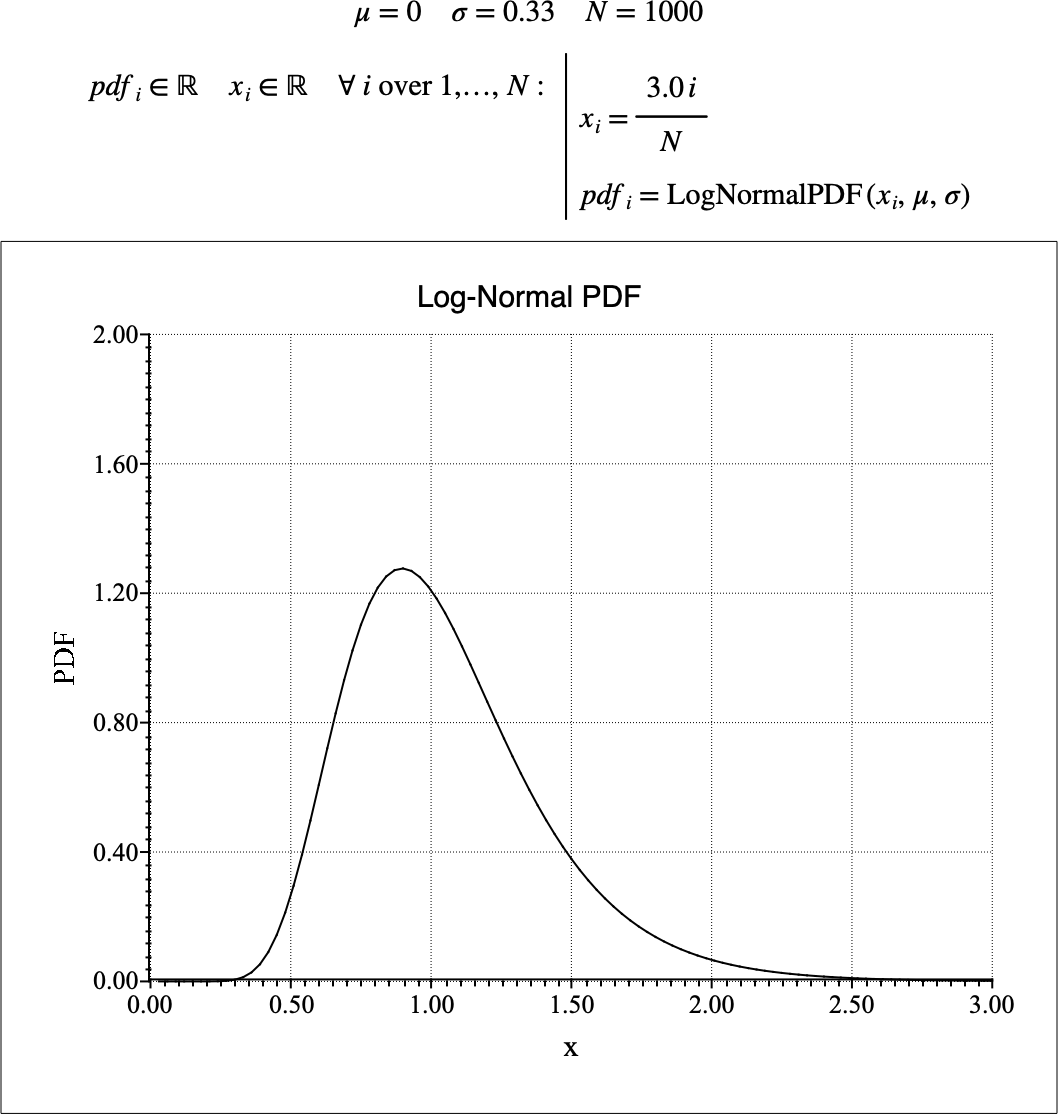\(\text{LogNormalPDF}\)¶
You can use the \(\text{LogNormalPDF}\) function to calculate the probability density function (PDF) of the log-normal distribution.
You can use the \lognormalp backslash command to insert this function.
The following variants of this function are available:
\(\text{real } \text{LogNormalPDF} \left ( \text{<x>} \right )\)
\(\text{real } \text{LogNormalPDF} \left ( \text{<x>}, \text{<}\mu\text{>} \right )\)
\(\text{real } \text{LogNormalPDF} \left ( \text{<x>}, \text{<}\mu\text{>}, \text{<}\sigma\text{>} \right )\)
Where \(x\), \(\mu\), and \(\sigma\) are scalar values
representing the value of interest, the mean value and the standard deviation.
If not specified, the mean value will be 0 and the standard deviation will be
1. Note that this function is defined over the range \(x > 0\) and
\(\sigma > 0\). The \(\text{LogNormalPDF}\) function will generate a
runtime error or return NaN for values for which the function is not
defined.
The value is calculated directly using the relation:
Figure 175 shows the basic use of the \(\text{LogNormalPDF}\) function.

Figure 175 Example Use Of the LogNormalPDF Function¶
